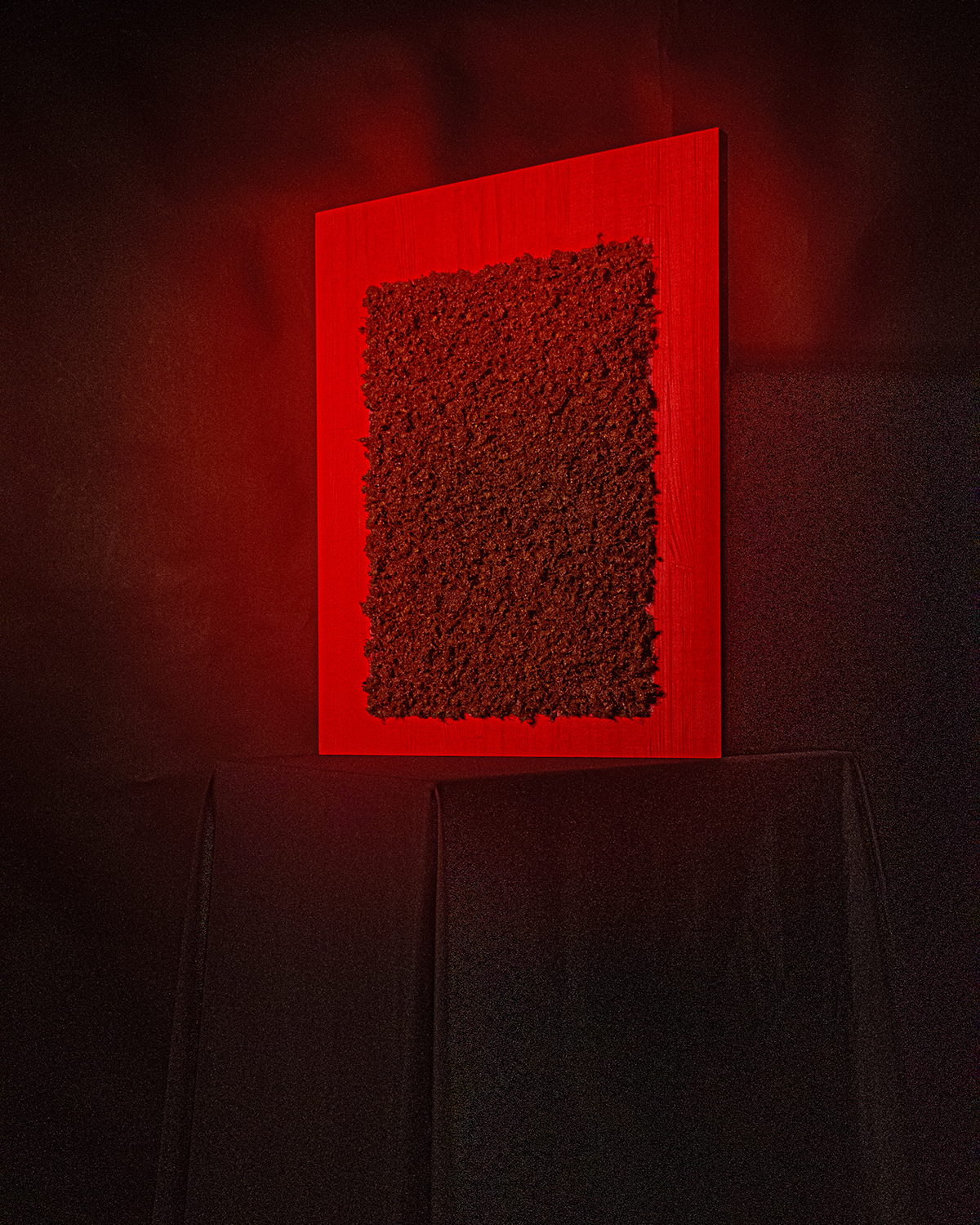demonstration
2023



Демонстрація
Каштанові пелюстки, цвіль, дерево, водоемульсійна фарба, клей, лак
1 травня 1986 року. Дівчата у парадних віночках зі штучних квітів очолюють потік пролетарів, які єднаються під каштанами Хрещатика. Портрети вічно живого Леніна та тоді ще живого Горбачова урочисто крокують головами ударників праці. Святкову колону замикають квіти життя.
Демонстрація до Дня солідарності трудящих офіційно триває годину двадцять хвилин, однак містяни гуляють до вечора. На схожі паради по всій Україні мусили виходити мільйони. Попід каштанами Малої Виски пройшлась і моя мати – тоді ще школярка. Діти, що того дня маршували місцевими хрещатиками, незабаром дізнаються, де саме в тілі знаходиться щитовидка.
СССР був побудований на очікуванні світлого майбутнього – Царства небесного для обраних, який настане після кінця старого світу. Щорічні есхатологічні ритуали мали нагадувати про надмету, яка виправдовувала існування режиму. У 1986 році уже ніхто не вірив у друге пришестя Леніна, проте вшанування забальзамованих пророків та запліснявілих гасел мусили підживлювати перегноєм цей статус-кво.
За п’ять днів до параду – 26 квітня 1989 року – на Чорнобильській АЕС вибухнув реактор. Коли колони автобусів евакуйовували жителів 30-кілометрової зони, над весняними каштанами нависала хмара із радіонуклідів. Забруднення перевищувало норму у сотні разів, але влада заборонила говорити про катастрофу. Замовчування запустило ланцюгову реакцію, яка доклалася до того, чому 1 грудня 1991 року 90,32 % обвели у своїх бюлетенях “Так.” Однак гібридна окупація Криму та Донбасу, а згодом повномасштабна війна виявили, що кінець СССР виявився лише початком напіврозпаду імперії.
Demonstration
Chestnut petals, mold, wood, water-based paint, glue, varnish
May 1, 1986. Girls in faux flower wreaths lead the flow of proletarians who unite under the chestnut trees of Khreschatyk – Kyiv's main street. The portraits of the ever-living Lenin and the then-still-living Gorbachev march solemnly over the heads of shock workers. The festive column is closed by the flowers of life.
The International Workers' Day demonstration officially lasts one hour and twenty minutes. However, people enjoyed the holiday until the evening. Millions had to attend similar parades throughout Ukraine. Among them was my mother, who walked under the chestnut trees of her native town when she was still a school student. The kids who marched that day in local Khreschatyks will soon find out exactly where the thyroid gland is in the body.
The Soviet Union was built on the expectation of a bright future – the Kingdom of Heaven for the chosen, which will rise on the ruins of the old world. Annual eschatological rituals were supposed to remind of the supreme goal that justified the regime's existence. In 1986, no one believed in the second coming of Lenin. But the veneration of embalmed prophets and moldy slogans was supposed to feed the status quo with manure.
Five days before the parade – on April 26, 1989 – a reactor exploded at the Chornobyl nuclear power plant. As convoys of buses evacuated residents of the 30-kilometer zone, a cloud of radionuclides hung over the spring chestnut trees. The pollution exceeded the norm hundreds of times, but the authorities forbade informing about the catastrophe. The hush-hush disaster set off a chain reaction that contributed to why 90.32% of citizens said "yes" to independent Ukraine on December 1, 1991. However, the hybrid occupation of Crimea and Donbas, followed by a full-scale war, revealed that the end of the USSR only marked just the half-life of the empire.


